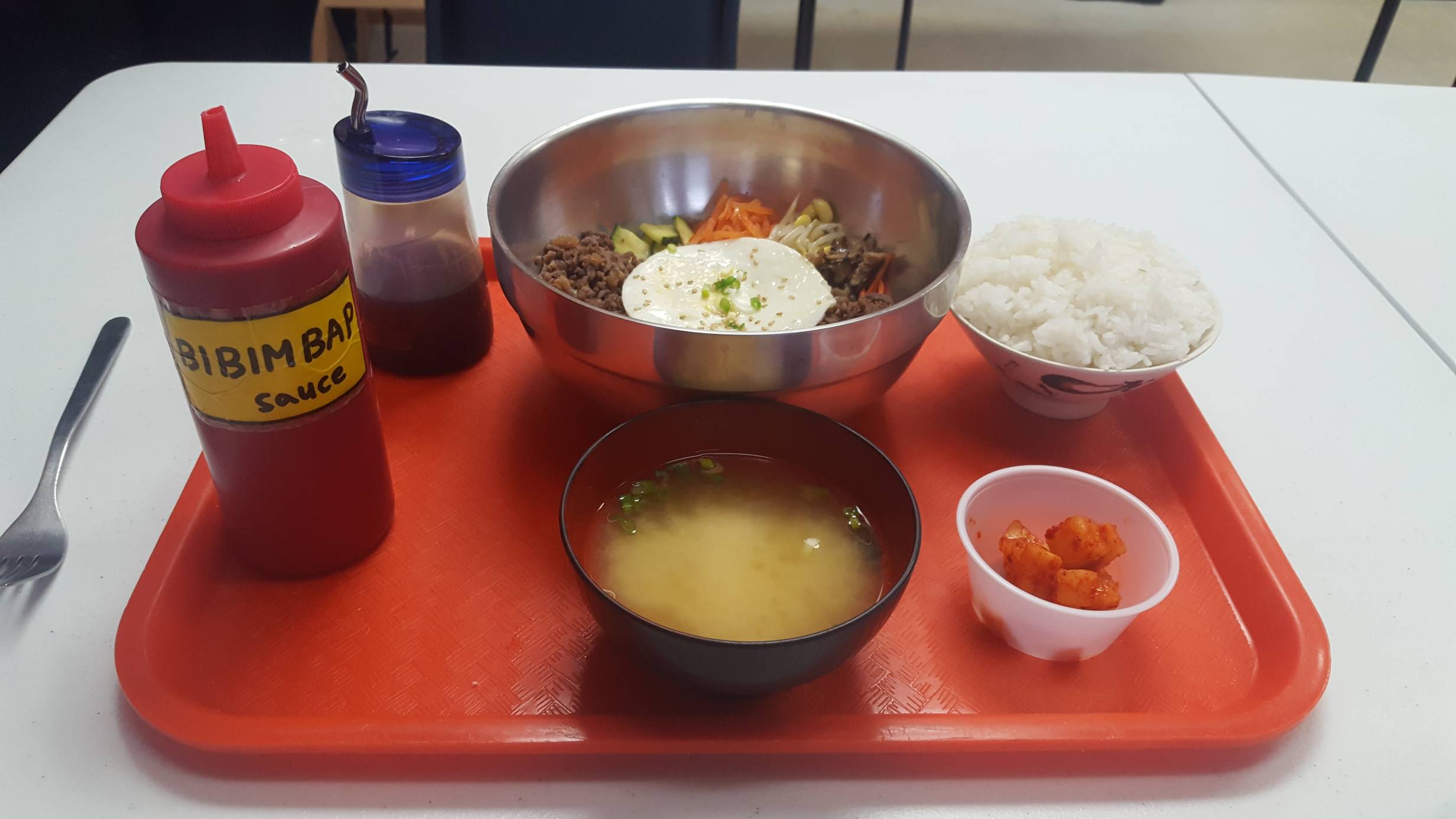If you are looking for something affordable and tasty, K-Bowl provides an array of Korean food that is delicious and within anyone’s price range.
 My experience with Korean cuisine has been rather limited. I enjoy most foods, but I confess that when I do go to Korean restaurants that I have to go with someone who has been before. Often the menu looks appetizing, but as a person who does not read Korean, it can be a bit difficult to order something when you do not know what it is. Rather than be the kind of person who would face such a challenge with courage and pick something for the sheer pleasure of trying something new, I pick something that a friend says is good after spending agonizing minutes trying to look like I have some semblance of independence. Then the crippling shame kicks in, and it is months before I feel like I can venture back to try again.
My experience with Korean cuisine has been rather limited. I enjoy most foods, but I confess that when I do go to Korean restaurants that I have to go with someone who has been before. Often the menu looks appetizing, but as a person who does not read Korean, it can be a bit difficult to order something when you do not know what it is. Rather than be the kind of person who would face such a challenge with courage and pick something for the sheer pleasure of trying something new, I pick something that a friend says is good after spending agonizing minutes trying to look like I have some semblance of independence. Then the crippling shame kicks in, and it is months before I feel like I can venture back to try again.
Usually when I go to Korean restaurants I get bulgogi, a dish consisting of marinated beef — my fail safe option. It is very flavorful and I find that it is never disappointing (mostly because it comes with a bunch of really yummy pickled vegetables). However, knowing that I should try something that utilizes many ingredients, I decided that bibimbap was a better choice.
The origins of bibimbap are a bit of a mystery, but most foodies would agree that the first emergence of bibimbap as a dish occurred during the Joseon period (1392-1910). It typically consists of a variety of vegetables and marinated beef served on a bed of rice and topped with an egg in the center, making it as much of a treat to look at as to eat. With this in mind, I made my journey to K-Bowl with high hopes.
I entered the restaurant and took note of how small the space is. It was very clean and neatly arranged, but clearly this was a place that encouraged take out orders. However, I wanted the full experience so I dined in.
The menu had a full description of each food item, and I was happy to find that all the ingredients listed were to my liking. The price was also very moderate compared to the other places I have been before. The bibimbap was $10.50, which I thought was a steal.

The food was served on cafeteria style trays that confirmed my idea that the restaurant typically had more people order take out. It did not make it look any less appetizing; overall it looked wonderful. It was served with a small cup of broth, pickled radish, and rice on the side. The broth was very good, dark in color and slightly briny, which brightened the tastes of the ingredients in the bibimbap. The pickled radish, which was very spicy and crunchy, was also great with clearing away any residual flavors so I could focus on what each ingredient tasted like.
There were a lot of different vegetables like bean sprouts, carrots, cucumber, zucchini, and mushrooms, so the colors made it look very vibrant and appetizing. In typical fashion the marinated beef was centered in the middle of the bowl with an fried egg on top. I am used to the eggs being prepared sunny side up, which makes it easy to mix with the other ingredients, but alas, this time it was mostly cooked and was much harder to mix with the rest.
Traditionally with bibimbap the ingredients must be mixed thoroughly together and is accompanied by gochujang, a condiment made from red chili and fermented soybeans (it looks like ketchup but tastes nothing like it). In my opinion it completely changes the dish if it is not mixed well and the flavor combinations would be completely missed.
The mixture of raw, crunchy vegetables, and chewy rice and beef made for an interesting overall texture. The beef was very sweet, but with the vegetables and the gochujang sauce it balanced out well. In fact the gochujang made everything mix better together, remedying the issue I had with the mostly cooked egg. It made it more spicy, but it did not overshadow any of the other flavors.
In the end I found that I enjoyed my meal very much, especially for the price. The one observation that stuck with me throughout the encounter was that it definitely felt more like a fast-food version of a typical bibimbap experience, making it perfect for those who are craving Korean but are lacking in either time or money. I felt very much at ease the entire time, which is something that I am not used to when I go to a new place. Considering all of this, I would definitely go to K-Bowl again.
K-Bowl is located at 39 E Green St, Champaign, and is open Tuesday through Sunday, noon to 10 p.m.
All photos by Merry Thomas.








